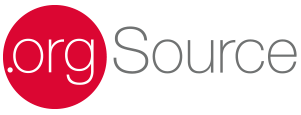In the Spotlight, the IDSA Foundation Finds Success

Most of us didn’t have viruses on our minds before 2020. Fortunately, some people make researching, preventing, and helping patients survive diseases like COVID-19 their life’s work. When the pandemic put the Infectious Diseases Society of America in the public eye, Stephen Peeler, CFRE, was determined to use that opportunity to gain support for the life-saving cause IDSA members represent.
Around the world, infectious diseases claim 17 million lives every year. Yet, the rate and reach of new threats are outpacing the number of practitioners entering the field.
Stephen Peeler is the executive director of the IDSA Foundation, the $1.6 million—and growing—fundraising arm of IDSA. The organization invests in addressing that challenge through research funding, workforce development, mentoring, and diversity and inclusion.
I was thrilled to interview Stephen for my Association 4.0 Podcast. The Foundation’s story is a perfect example of using what I call Association 4.0 strategies, or an entrepreneurial mindset, to succeed in disruptive markets. Those skills and attitudes include:
- The willingness to change course to seize opportunity and avoid disruption
- Approaching problem-solving with curiosity and innovation
- Using freelance expertise to grow
- Giving customers what they want when they need it
Pivot to Fast Track Growth
During week one of the lockdown, the Foundation was scheduled to move into a new suite of offices. A year and a half later, the boxes are still unpacked. Although the physical move has yet to be fully realized, the Foundation made a leap of another kind. In response to the pandemic, the organization changed its business model. That pivot resulted in innovative approaches to programming and staffing that continue to put the Foundation on a fast track for growth.
“Our doctors are on the front line advising emergency departments and developing vaccines,” Stephen explained. “They deal with diseases ranging from AIDS to Zika virus and include the most visible experts in the field. Anthony Fauci, MD, FIDSA, Director of the National Institute of Allergy and Infectious Diseases, is an IDSA member. So is Rochelle Walensky, MD, MPH, FIDSA, who leads the Centers for Disease Control and Prevention. From those public-facing leaders to physicians and residents across the country, everyone in our community was experiencing burnout. We had to make sure that we supported them and provided the critical resources and treatment guidelines they needed.
“All eyes were on IDSA and the Foundation,” Stephen recalled. “We have standing calls with both the CDC and National Institutes of Health. People were looking to IDSA for expertise on critical issues such as treating patients with COVID-19 complicated by conditions like HIV, diabetes, or hepatitis B and C.”
Be Entrepreneurial

IDSA and the Foundation both took an entrepreneurial approach to the shifting situation. They adjusted their pace to the demands of their market. The process involved rapid expansion in areas targeted for growth and contraction of less consequential initiatives. Freelance employees and specialists were engaged to supplement the full-time staff’s expertise.
“IDSA hired numerous people in the guidelines department, and like everyone else, we moved all our meetings and education online,” Stephen recalled. “We knew that the migration to virtual events would have a significant impact on revenue.”
As a fundraising organization, the Foundation was uniquely positioned to offset some of those losses. Stephen created a special surge team to begin a robust grant writing program. One of the first initiatives was applying to the CDC for support.
“We received a $2 million grant,” Stephen noted. This funding averted a deficit, and a positive stock market actually enabled the organization to grow its reserves. “On the other hand,” Stephen recalls, “we suspended fundraising outreach to our members. They were facing cuts or freezes in salaries coupled with long hours and punishing workloads.”
Identify Opportunity
Stephen realized that the Foundation’s high profile during the pandemic gave it a unique advantage with grantmakers of all stripes. This was new territory for the Foundation, and they launched a bold start.
“Beginning in May of 2020, we organized a team of nine grant writers and researchers from across the country. Our goal was to explore where our mission intersected with funding priorities,” Stephen advised. “We began by looking at seven opportunity areas. Then we narrowed the focus to these four pillars: research funding, mentorship, workforce development, and diversity and inclusion.

“Our research revealed nearly 600 potential opportunities totaling about $60 million. We continued to drill down to grants that would be a minimum of $250,000 and three years in length. As you can imagine, we were looking at the largest funders in the community, organizations like the Gates and Robert Wood Johnson foundations.”
“We also learned two important lessons. We needed to gain programming expertise, and we were facing a Catch-22. It would be difficult, if not impossible, to ask a foundation for a gift of approximately the same size as our $1.6 million budget.
“Growth had to begin with our current funding partners. We made our case, and this year we’re on track to receive $4.1 million. That success gives us the sea legs to make larger requests. I also hired a consultant to evaluate our programs.
This is critical to ensuring we’re able to deliver on our mission to reduce the burdens of infectious diseases worldwide. So far, we have invested over $1 million toward life-saving research, fostered more than 1,050 young ID doctors through professional development and mentorship opportunities, and funded over 600 research opportunities for emerging practitioners.
“Association initiatives tend to be inward-facing. Identifying how to impact a broader audience is our next tier. To prepare for a future pandemic, more doctors, who represent our diverse population, need to come through the pipeline. And I’m excited to report that in January, IDSA will be the first medical society to launch a national outreach initiative to medical students.”
Now that their path through the foundation world is clearer, the surge team is focusing on corporate business development. To expand the opportunities for industry partnerships beyond the scope of the annual meeting, the Foundation developed a comprehensive program that allows those relationships to grow all year long. Freelance workers play a significant role in the success of these new initiatives.
“We have five full-time employees, but there is a team of 41 freelancers,” Stephen explains. “A lesson that I’ve learned is to hire people who are subject matter experts, especially if the assignment is something that you may not do regularly, like grant writing. It’s a heavy lift, but you must find a way to get the best of the best, even if you are only hiring someone for five hours a week. As the leader, the last thing you have time for is 41 direct reports. You need people who can supervise those teams.”
Use Association 4.0 Strategy
With the new infrastructure in place, the IDSA Foundation is positioned to promote its four-pronged mission. “We’re focusing on the activities that we do best,” Stephen observes. “We’re also careful to align with IDSA’s strategic plan for maximum impact. I think in the next five years we can make the leap to $10 million to continue to fund research, provide mentorship opportunities, and ensure there is a talented, diverse workforce of infectious diseases professionals in the future.”
The pandemic spotlight was a true test for Association 4.0 leadership. And Stephen’s story is a fine example of how building that skill set can help professionals to identify potential, reposition for growth, and realize success even under the toughest circumstances.
To learn more about Association 4.0 leadership, see our books: Positioning for Success in an Era of Disruption and An Entrepreneurial Approach to Risk, Courage, and Transformation.
